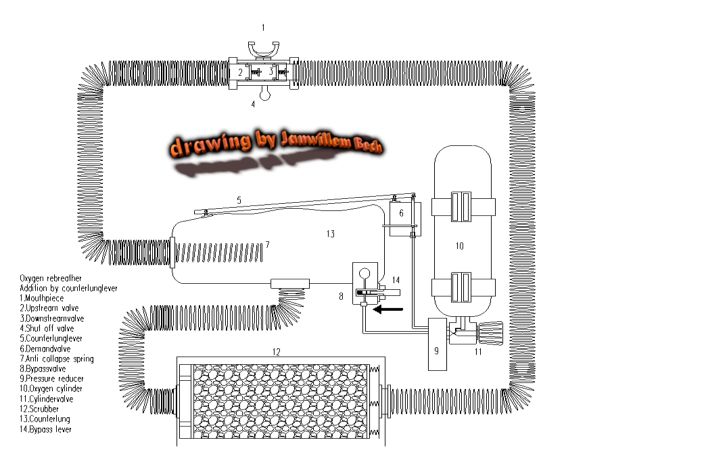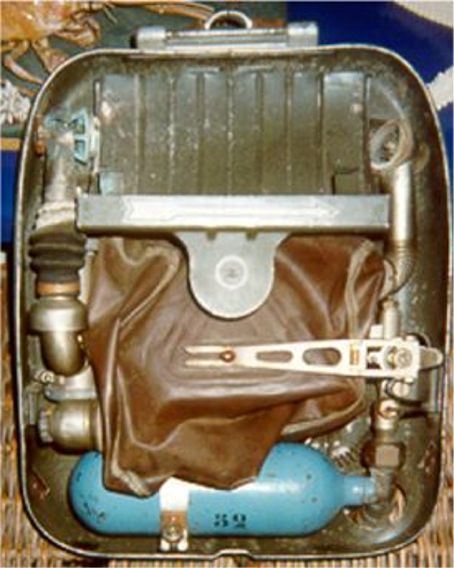
Valves in oxygenrebreathers operated by the moving counterlung
In 1920, the first rebreather was developed that operated with a then new mechanism. Until then, the supply of oxygen to the breathing circuit had been reserved for regulators that injected gas continuously, or by manually operated valves. In 1920, for the first time, a mechanism was used in which the up and down movement of the counterlung served as a driving force for a dosing valve. When the inhalation cycle is over and the counterlung is in its least inflated state, a lever that moves with it can depress a valve. As soon as the lung fills up again through exhalation, new gas is supplied and in this way, with each breath a certain dose of gas can be added to the cycle. The technical challenge was to dose the gas in such a way that the amount of oxygen consumed in relation to the amount supplied was as balanced as possible. In practice, the dosing mechanism was adjusted in such a way that some gas had to be added manually every 10 minutes to compensate.



Therebreathersite was founded by Jan Willem Bech in 1999. After a diving career of many years, he decided to start technical diving in 1999. He immediately noticed that at that time there was almost no website that contained the history of closed breathing systems. The start for the website led to a huge collection that offered about 1,300 pages of information until 2019. In 2019, a fresh start was made with the website now freely available online for everyone. Therebreathersite is a source of information for divers, researchers, technicians and students. I hope you enjoy browsing the content!
